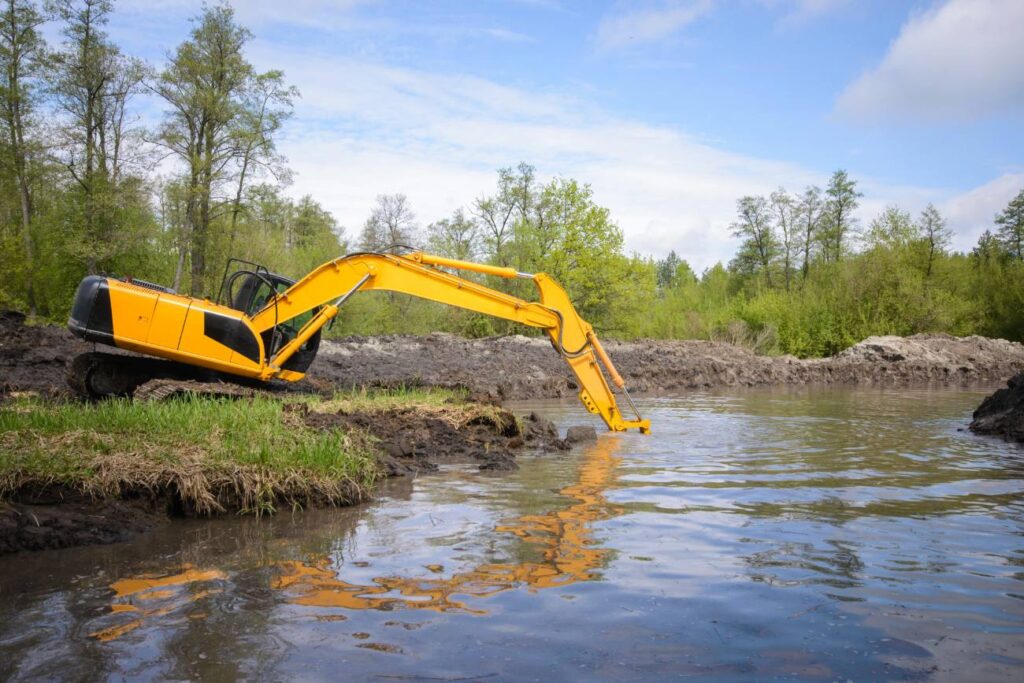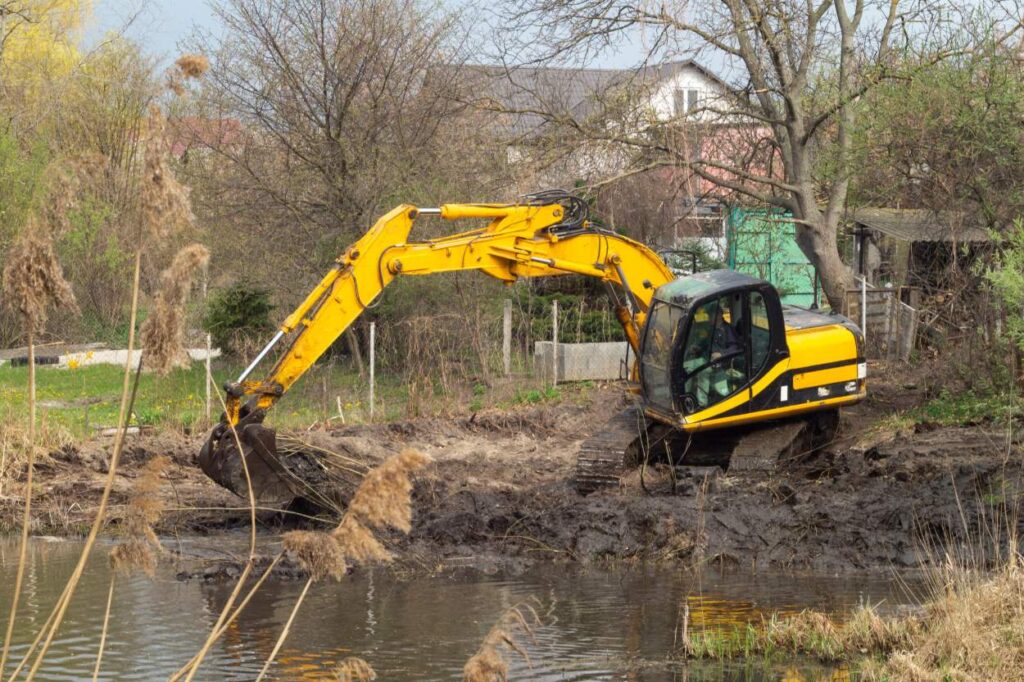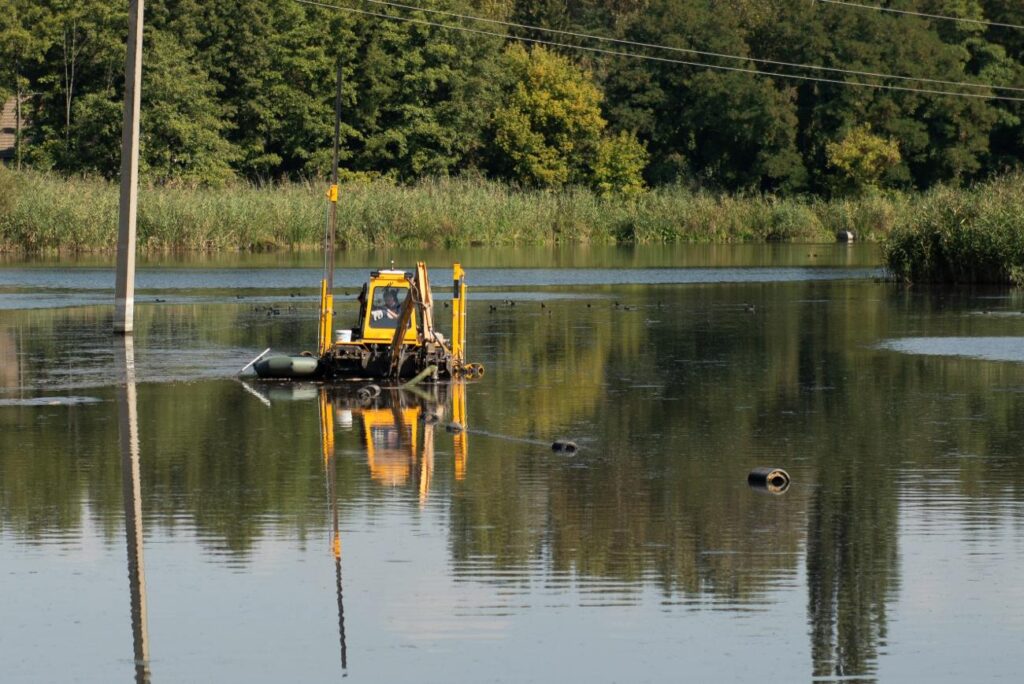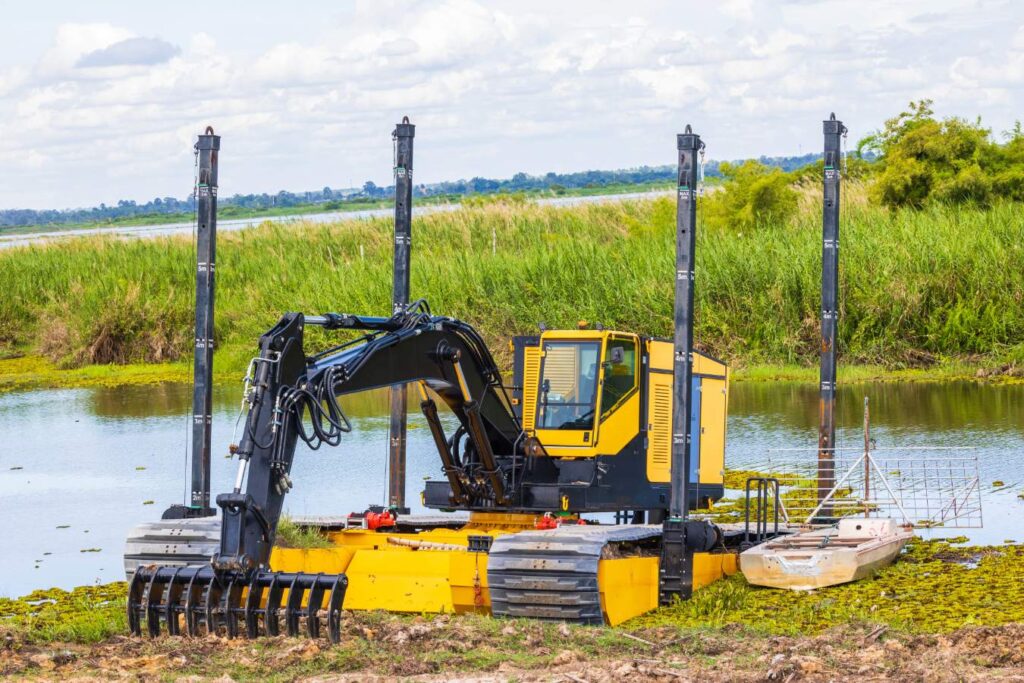Pond sedimentation is a common issue that affects both natural and artificial ponds. Over time, organic matter, debris, and pollutants accumulate at the bottom, leading to the gradual buildup of sediment. This accumulation can reduce the water depth, hinder water flow, and promote harmful algae growth, which disrupts the aquatic ecosystem. As sediment continues to accumulate, it can lead to poor water quality, decreased oxygen levels, and a decline in biodiversity.
To effectively manage these challenges, efficient pond dredging equipment is essential. Dredging not only removes excess sediment but also restores water clarity and improves the overall health of the pond. Modern pond dredging equipment is designed to address these issues with advanced technology, offering better performance, precision, and minimal environmental impact.
Among the various innovations, small pond dredge equipment stands out as a practical solution for smaller ponds or areas with restricted access. This equipment provides targeted, efficient dredging without the need for large-scale machinery. Whether dealing with a small backyard pond or a community water feature, modern pond dredging equipment offers versatile, cost-effective solutions to keep ponds in optimal condition. By utilizing the latest technology, pond owners can ensure their water bodies remain healthy, vibrant, and environmentally sustainable.
Understanding the Need for Pond Dredging

Sediment build-up in ponds is a natural but problematic process that occurs over time. It consists of various materials such as silt, organic matter, and debris, which accumulate in the water through runoff, erosion, or decaying vegetation. While sedimentation is a normal part of the pond ecosystem, excessive accumulation can severely impact water depth and volume. As sediment builds up, it reduces the available space for aquatic life, limiting fish habitats and the overall health of the ecosystem. Over time, this accumulation can transform the pond into a shallow, poorly oxygenated water body that is less capable of supporting vibrant aquatic life.
The negative effects of sediment accumulation on water quality, aquatic life, and aesthetics are significant. Sediment often carries excess nutrients like phosphorus and nitrogen, which contribute to the formation of harmful algae blooms. These blooms rob the water of oxygen, creating an unhealthy environment for fish and other organisms. Additionally, excess sediment clouds the water, reducing sunlight penetration and inhibiting the growth of aquatic plants that rely on photosynthesis. As a result, water quality deteriorates, fish populations may decline, and the pond becomes less aesthetically pleasing, which affects its recreational and environmental value.
Environmental impacts are also a serious concern. As excess nutrients from sediment enter nearby rivers or lakes, they can contribute to nutrient pollution, causing eutrophication and further damaging water quality in broader ecosystems. Moreover, the decaying organic matter in the sediment can release methane, a potent greenhouse gas that contributes to climate change.
Effective dredging is one of the best solutions for mitigating sedimentation and restoring pond health. Pond dredging equipment is designed to efficiently remove excess sediment, restoring water depth and improving overall water quality. For smaller ponds, small pond dredge equipment offers a practical and affordable alternative. This equipment is ideal for compact, confined spaces where larger machinery cannot be used. By investing in the right pond dredging equipment or small pond dredge equipment, pond owners can ensure a healthier aquatic environment, maintain water quality, and comply with environmental regulations.
Key Features of Modern Pond Dredging Equipment

Modern pond dredging equipment has evolved significantly, driven by technological advancements that enhance efficiency, precision, and environmental sustainability. Traditional dredging methods were often cumbersome, inefficient, and disruptive to the surrounding ecosystem. However, today’s innovations have transformed pond dredging into a more effective and environmentally responsible process. One of the most notable improvements is the development of hydraulic dredging systems that use powerful pumps to move sediment from the pond floor to disposal areas. This technology allows for more precise sediment removal, reducing the risk of disturbing aquatic life and ensuring minimal impact on the environment.
The key benefits of modern pond dredging equipment include improved efficiency and environmental performance. With better suction capabilities and higher pumping power, new equipment can handle larger volumes of sediment more quickly and with less energy. Additionally, many modern dredging machines are designed to be more fuel-efficient, reducing emissions and operating costs. As environmental regulations become stricter, these eco-friendly features help meet compliance standards while minimizing the carbon footprint of dredging operations.
When selecting pond dredging equipment, it’s crucial to consider several features that directly impact performance. One important aspect is suction capabilities—stronger suction allows for faster sediment removal, making the dredging process more efficient. Portability is another critical feature, particularly for smaller ponds or areas with limited access. Many modern pond dredging equipment systems are designed to be easily transported and maneuvered, allowing for precise dredging in confined spaces without damaging the surrounding landscape.
Versatility is also a key factor to look for in pond dredging equipment. The best systems can be adapted to different pond sizes and sediment types, offering greater flexibility for various dredging projects. As ponds of all sizes need maintenance, there is a growing demand for small pond dredge equipment. These compact machines are specifically designed for smaller ponds and provide a cost-effective, efficient solution for removing sediment without the need for large-scale machinery. Whether for residential or community ponds, small pond dredge equipment delivers targeted and efficient dredging, ensuring that pond owners can maintain healthy, vibrant water bodies with ease.
Innovative Pond Dredging Technologies
Innovative pond dredging technologies have revolutionized the way ponds are maintained, offering more efficient, precise, and environmentally friendly solutions. Among the most notable modern dredging technologies are hydraulic dredging, auger dredging, and airlift dredging. Each of these methods brings its own set of advantages, making them well-suited for different pond sizes and sediment types.
Hydraulic dredging is one of the most widely used technologies in pond dredging. It involves using a suction system to extract sediment from the pond floor and transport it through pipelines to a disposal site. This method is highly effective for removing large amounts of sediment and is capable of reaching deep areas of the pond, making it ideal for both large and small ponds. Pond dredging equipment using hydraulic technology is often equipped with powerful pumps that allow for high-efficiency dredging, reducing the time and effort required for sediment removal.
Auger dredging is another innovative technology that uses rotating augers to scrape and lift sediment from the pond floor. This method is particularly effective for dealing with dense or compacted sediment. The augers are designed to cut through tough layers of sediment and bring it to the surface for removal. Auger dredging is commonly used for ponds with heavy sedimentation, where traditional suction dredging may not be as effective. The versatility of auger dredging makes it a valuable tool in pond dredging equipment, particularly when precision is required in small or confined areas.
Airlift dredging is a unique method that uses air bubbles to lift and move sediment to the surface. This method is highly environmentally friendly as it minimizes disruption to the pond’s ecosystem. Airlift dredging is also a good option for smaller ponds or areas with sensitive aquatic life, as it is less invasive compared to other dredging methods.
These innovations have significantly improved dredging operations, providing faster, more efficient ways to manage pond sedimentation. They offer significant benefits for both large and small ponds, enabling pond owners to restore water quality and prevent issues like algae blooms and oxygen depletion. For smaller ponds, small pond dredge equipment offers more localized and precise dredging operations. This equipment is compact, maneuverable, and specifically designed to handle the challenges posed by smaller water bodies. Whether using hydraulic, auger, or airlift technology, small pond dredging equipment provides the tools necessary for efficient, sustainable pond management.
Advantages of Small Pond Dredge Equipment

Small pond dredge equipment offers a range of benefits specifically tailored to the needs of smaller pond owners or communities. Unlike larger dredging machines that require significant space and resources, small pond dredging equipment is compact, efficient, and designed for more localized operations. This makes it an ideal solution for homeowners, parks, recreational areas, or community ponds where larger equipment is impractical or unnecessary. The ability to perform precise dredging in smaller, confined spaces allows for better management of pond ecosystems without the need for major disruption.
One of the key advantages of small pond dredge equipment is its ease of use. These machines are typically lighter and more maneuverable, allowing operators to navigate tight spaces and work in ponds with limited access points. Whether the pond is surrounded by landscaping or situated in a backyard, small pond dredging equipment can be easily transported and positioned for targeted sediment removal. This level of accessibility makes it easier for pond owners to perform regular maintenance, ensuring their water bodies stay healthy and functional.
Another significant benefit is the affordability of compact dredging equipment. Smaller systems generally come at a lower cost compared to larger machines, making them more accessible to individual pond owners or smaller communities with limited budgets. Additionally, smaller equipment is typically more fuel-efficient, reducing operating costs over time. The reduced size also means that less workforce and fewer resources are required to operate, making small pond dredge equipment a cost-effective solution for pond maintenance.
In terms of efficiency, small pond dredge equipment allows for more precise and controlled sediment removal. It can target specific problem areas in the pond, ensuring that only the necessary sediment is removed. This makes it an effective tool for preventing the build-up of harmful nutrients while maintaining water quality. Ideal scenarios for using small pond dredge equipment include backyard ponds, community water features, golf course ponds, and small recreational lakes. In these settings, compact equipment provides the perfect balance of performance, precision, and affordability, ensuring that pond owners can effectively manage sediment and preserve their pond’s ecological health.
How to Choose the Right Pond Dredging Equipment
Choosing the right pond dredging equipment involves considering several key factors to ensure that the equipment meets the specific needs of your pond. One of the first aspects to evaluate is the size and depth of the pond. Larger ponds typically require more powerful pond dredging equipment capable of covering expansive areas and reaching deeper sediment layers. In contrast, smaller ponds may not need such heavy-duty equipment, and a more compact solution, such as small pond dredge equipment, could be more appropriate.
Another important factor is the type of sediment in the pond. Some ponds may contain soft silt and organic material, while others might have dense, compacted sediment. Choosing the right pond dredging equipment to handle specific sediment types is essential for ensuring efficiency and minimizing disruption to the ecosystem. For example, hydraulic dredgers are ideal for loose sediments, while auger dredgers are better suited for tougher, denser materials.
Water flow is another consideration. Ponds with significant water movement may require pond dredging equipment that can maintain suction and performance even in turbulent conditions. Conversely, ponds with minimal water flow may not face such challenges, allowing for the use of smaller, more affordable options.
For smaller ponds, small pond dredge equipment is often the best solution. These machines are designed for precision, affordability, and easy maneuverability in confined spaces. Their compact size allows for targeted dredging, making them perfect for smaller ponds with specific dredging requirements, such as those found in residential or community settings.
Conclusion
Effective pond dredging plays a critical role in managing sediment and maintaining the health of aquatic ecosystems. Sediment accumulation can degrade water quality, harm aquatic life, and compromise the aesthetic appeal of a pond. Using the right pond dredging equipment helps restore pond depth, improve water clarity, and prevent nutrient buildup that can lead to harmful algae blooms.
Modern pond dredging equipment is designed to efficiently and sustainably address sedimentation issues, offering solutions for ponds of all sizes. Whether using hydraulic dredgers, auger systems, or airlift technology, these tools enhance the precision and efficiency of dredging operations, making them essential for pond care and environmental restoration.
When selecting the right dredging equipment, it’s important to consider factors such as pond size, sediment type, and water flow. For smaller ponds, small pond dredge equipment is often the ideal choice, providing an affordable, precise, and efficient way to address sedimentation without the need for large-scale machinery. This ensures that pond owners can maintain healthy, vibrant water bodies for years to come.


